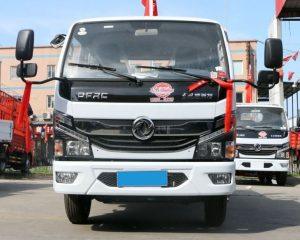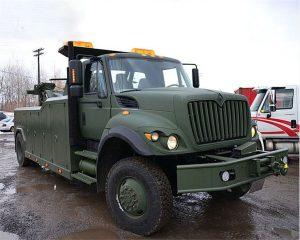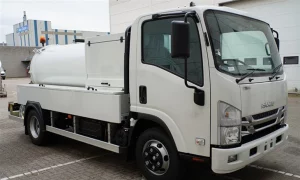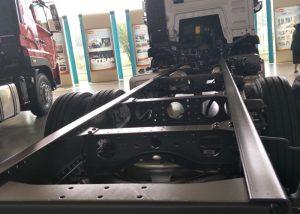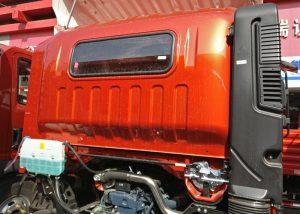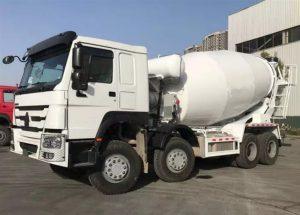Monday to Saturday - 8:00 -17:30
A Comprehensive Guide to Aerial Ladder Fire Trucks
Aerial ladder fire trucks are crucial tools for firefighters, offering unique features and capabilities that enhance firefighting and rescue operations. Understanding the anatomy, functionality, types, and maintenance of these vehicles can help in appreciating their role in emergency services.
Introduction to Aerial Ladder Fire Trucks
Aerial ladder fire trucks, commonly referred to simply as aerials, are specialized firefighting apparatus equipped with extendable ladders designed for reaching high places. With the increasing height of buildings in urban settings, the importance of these vehicles has grown significantly. Firefighters utilize aerial ladder trucks not only for reaching rooftops but also for conducting rescues, performing ventilation, and controlling fires from above. This article explores the various aspects of aerial ladder fire trucks, including their components, types, operational techniques, and maintenance strategies.
What is an Aerial Ladder Fire Truck?
At its core, an aerial ladder fire truck is part of a specialized category of fire apparatus that combines a fire engine with a vertical ladder mechanism. These trucks typically feature:
- Extensible ladders capable of reaching significant heights
- Water pumps and hoses for firefighting operations
- Emergency lighting and signaling equipment
- Storage compartments for tools and gear
Key Components of Aerial Ladder Fire Trucks
Understanding the key components of an aerial ladder truck is essential for grasping its functionality. This section outlines the main components:
Ladder Mechanism
The ladder is the most distinguishing feature. Aerial ladders can often extend anywhere from 50 to 135 feet, depending on the type of truck. Each ladder includes various sections that can articulate to reach difficult angles.
Water Pumping System
Aerial ladder trucks are outfitted with powerful water pumps. These pumps can supply high volumes of water, enabling effective firefighting even at elevated positions.
Storage Compartment
These trucks come with various compartments to store hoses, firefighting tools, medical equipment, and personal protective gear. Proper organization in these compartments is essential for rapid response situations.
Control System
The ladder and associated equipment are controlled via a hydraulic system, allowing for precise maneuverability and control by the operators from the ground or the aerial platform.
Types of Aerial Ladder Fire Trucks
1. Straight Ladder Trucks
Straight ladder trucks employ a simple extendable ladder that remains straight. They are often used in smaller urban settings where space is limited and are suitable for direct access to rooftops.
2. Articulating Ladder Trucks
Articulating ladder trucks feature ladders with joints that bend at various angles. This flexibility allows firefighters to navigate around obstacles and reach challenging areas.
3. Platform Ladder Trucks
These trucks have a bucket or platform at the tip of the ladder. The platform can hold multiple firefighters, providing a secure working environment for complex operations, such as rescue or aerial firefighting.
4. Combination Ladder Trucks
Combination ladder trucks merge features of traditional ladder trucks with other firefighting apparatus. They might include heavy rescue equipment, making them versatile for various emergency scenarios.
Operational Techniques with Aerial Ladder Trucks
Setting Up the Aerial Ladder
Setting up an aerial ladder truck can be the difference between life and death during emergency situations. Here are the steps involved:
- Position the truck strategically, ensuring access to the building.
- Deploy the stabilizers to secure the truck’s base.
- Extend the ladder to the desired height and angle.
- Ensure safety protocols before personnel enter the aerial platform.
Rescue Operations
When conducting rescue operations, firefighters utilize aerial ladders to reach individuals stranded in high places, such as windows in tall buildings. Effective communication and coordinated teamwork are essential during these operations.
Fire Suppression from Above
Aerial ladder trucks play a vital role in fire suppression from elevated positions. Firefighters can use the water supply from the truck and attack the fire from angles that ground hoses cannot reach.
Ventilation Techniques
Proper ventilation is critical during firefighting operations to manage smoke and heat effectively. Aerial ladders can facilitate ventilation through rooftop access, reducing fire intensity inside the structure.
Maintenance of Aerial Ladder Fire Trucks
Regular Inspections
Routine inspections are necessary to ensure the reliability and safety of aerial ladder trucks. Recommended checks include:
- Hydraulic systems
- Ladder integrity and extension functionality
- Vehicle brakes and tires
- Water pump effectiveness
Preventive Maintenance
Preventive maintenance strategies, such as regular lubrication of moving parts, keeping the vehicle clean, and replacing worn-out components, can significantly enhance the lifespan of an aerial ladder truck.
Annual Testing Requirements
Many jurisdictions require annual testing for the aerial ladder apparatus. This includes confirming the operational functionality of the ladder, the hydraulic mechanisms, and the water pump system.
Examples of Aerial Ladder Fire Trucks in Action
Case Study: High-Rise Fire Response
In a downtown urban area, a fire broke out on the 15th floor of a high-rise building. Firefighters quickly deployed an articulating ladder truck that rose above obstructing buildings, allowing access to the affected unit. They performed rapid rescues of tenants trapped inside and utilized the aerial platform for fire suppression, effectively preventing a potential disaster.
Case Study: Multi-Story Building Fire
At a local school, a fire ignited in the cafeteria located on the second floor. The nearby aerial ladder truck was able to quickly stabilize and extend its ladder to facilitate both firefighting and rescues, safeguarding the lives of students and staff. The fire was managed before spreading to other areas of the building.
The Future of Aerial Ladder Fire Trucks
As technology advances, aerial ladder trucks are incorporating modern features to enhance their functionality. Emerging technologies such as:
- Drone technology for reconnaissance
- Automated systems for quicker setup
- Enhanced hydraulic systems for better control
Frequently Asked Questions (FAQs)
1. How tall can aerial ladder fire trucks reach?
Most aerial ladder trucks can reach heights between 50 to 135 feet, with some specialized models capable of exceeding that range.
2. What is the difference between a straight ladder and an articulating ladder?
A straight ladder extends in one direction, while an articulating ladder can bend at joints, allowing for better maneuverability around obstacles.
3. How often should aerial ladder trucks undergo maintenance?
Regular inspections should occur daily, while preventive maintenance and detailed checks should happen monthly or bi-monthly, with an annual performance test required by many jurisdictions.
4. Can aerial ladder trucks be used for rescue operations?
Yes, aerial ladder trucks are primarily utilized for both firefighting and rescue operations, allowing firefighters to reach and rescue individuals in high places.
5. What features make aerial ladder trucks effective for firefighting?
The extendable ladder, powerful water pumps, versatile storage compartments, and maneuverability make them indispensable tools in effective firefighting and rescue operations.
6. Are aerial ladder trucks suitable for rural firefighting?
While primarily designed for urban settings, some aerial ladder trucks can be adapted for rural firefighting, especially in larger community developments.


